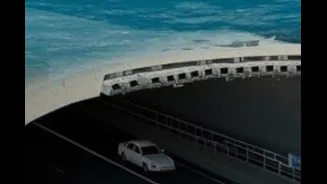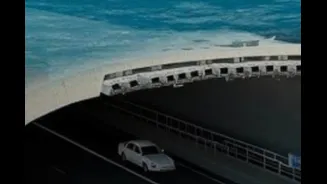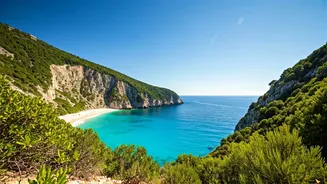Kerala is set to build its first-ever underwater tunnel, connecting Vypin and Fort Kochi. This landmark project, part of the state’s coastal highway plan, is poised to transform travel between the two
areas. The 3 km tunnel will run beneath the sea, cutting down the current 16 km road distance. Estimated to cost around Rs 2,672 crore, the project includes twin-tube tunnels worth Rs 1,225 crore and land acquisition costs of Rs 500 crore.
Once completed, the tunnel is expected to save passengers nearly Rs 1,500 per month and reduce travel time by up to two hours.
The long-awaited project is moving closer to reality, as the state government has directed the Kerala Rail Development Corporation Limited (KRDCL) to invite Expressions of Interest (EOI) from firms to take it forward. At present, travel between Vypin and Fort Kochi is hindered by the busy Cochin Port shipping channel, forcing passengers to rely on ferries or the long and tiring Goshree route.
Kerala’s First Underwater Tunnel Between Vypin And Fort Kochi
As per a report in Onmanorama, the daily journey between Fort Kochi and the High Court junction in Ernakulam is time-consuming and costly. Commuters often spend around two and a half hours to complete a round trip, mainly due to the long detours and heavy traffic. Many passengers are also forced to shell out at least Rs 300 for this tiring route, but the upcoming underwater tunnel will change this situation.
According to an individual, “Through the channel tunnel, passengers will spend just Rs 50 or Rs 100 and half an hour for the journey. A daily commuter in a month can save a minimum of Rs 1500 per month and his valuable 60 hours. Similar savings will accrue to trucks and other traffic using the tunnel.”
Overbridge Plan Dropped Due To Challenges
Interestingly, there was also a proposal to construct an overbridge connecting Fort Kochi and Vypin. However, after careful review, the plan was shelved, as it was deemed “technically difficult and financially not viable.”
KRDCL Managing Director V Ajith Kumar said, “Since it is a shipping channel, constructing a bridge is not practical. It will have to be constructed at such a height to permit the ship traffic. Moreover, the land acquisition process will also be strenuous. If we construct a tunnel, we will have to acquire only 100m of land on both sides of the landing points. So a tunnel is the most viable option here.”
The planned underwater tunnel will consist of two separate tubes, each with an outer diameter of 12.5 meters and an inner width of 11.25 meters, stretching 35 meters below sea level. Spanning a total distance of 2.75 km, the project includes 1.75 km of bored tunnels and 1 km of cut-and-cover sections on both ends. To meet global safety standards, the design incorporates emergency stop areas every 250 meters, escape routes every 500 meters, and a comprehensive ventilation system.
Construction Timeline
Construction is expected to take around 30 months, with an additional 18 months for land acquisition. If work begins by April 2025, officials aim to complete the project by September 2027.












